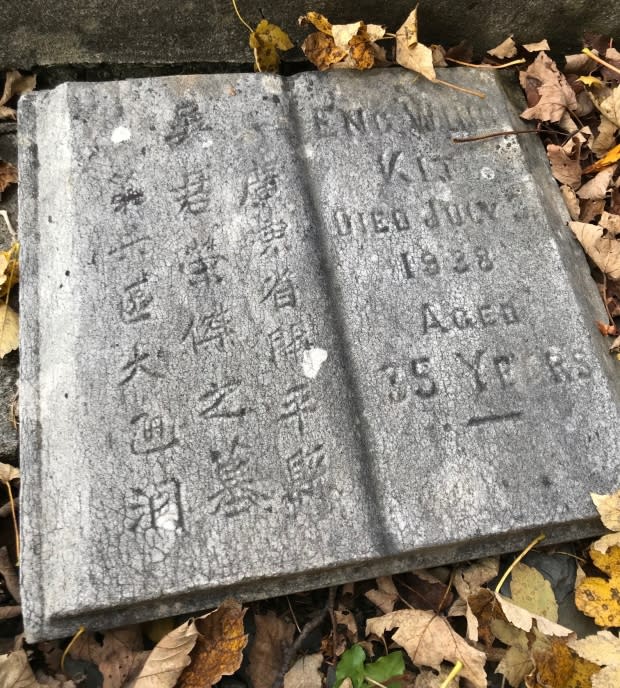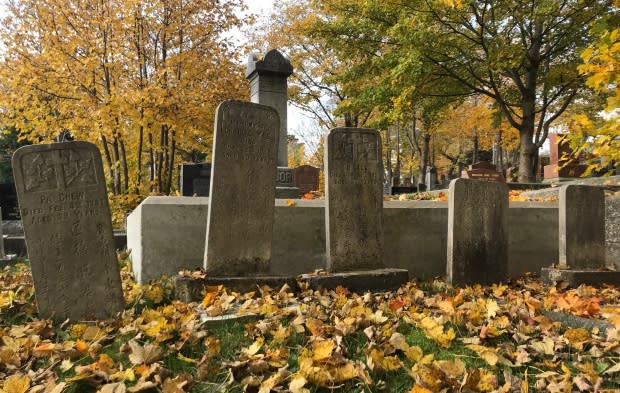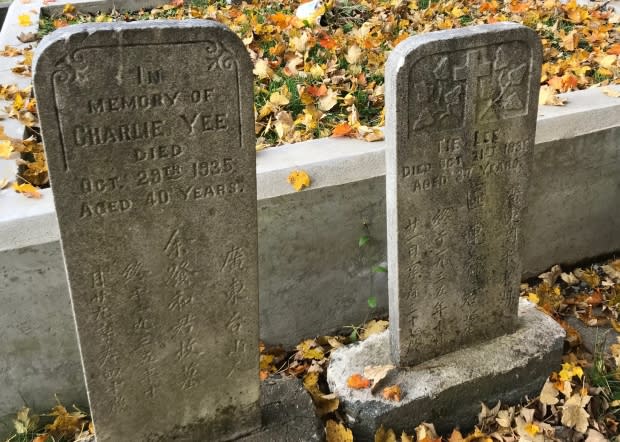St. John's cemetery sheds light on early Chinese immigration — and a cold case murder
Eighty years after Eng Wing Kit was murdered in the Regal Café in St. John's in 1938, the case is still unsolved.
Kit's grave sits in the General Protestant Cemetery between Waterford Bridge Road and old Topsail Road in the west end of St. John's, in a section where many of the headstones have Chinese characters and surnames like Lee and Hong.

Provincial folklorist Dale Jarvis said the men all came from the province of Guangdong in southern China — an example of chain immigration, where people from the same families travelled to Newfoundland to find work, often with the relatives who were already here.

According to Jarvis, Kit was a 35-year-old businessman who was found in his restaurant by a dairy farmer from Kilbride.
"And no one was ever brought to justice for his murder … an unsolved murder case that led to the mass questioning of every Chinese resident of St. John's," he said.
Racism and violence
Jarvis said life in St. John's was not easy for those early immigrants.
"There was a lot of anti-Chinese sentiment in St. John's at the time."
He pointed to the grave of Jim Lee, who ran one of the hand laundries in the city.

"The newspaper accounts are a pretty good record of the early Chinese experience," said Jarvis.
"Jim Lee was attacked and beaten. He was robbed several times. Young boys in the neighborhood would throw rocks through the windows of the Chinese laundry."
Hardships not talked about
Bob Hong's father, Gene, came to Newfoundland in 1931.
Like many of those men, Hong told CBC, his father first worked in a laundry. By the 1950s he had established a café and then several restaurants, including the United Nations and the House of Hong in St. John's.

Hong said his father didn't tell him about any of the hardships of those early days in Newfoundland.
"He just never talked about it."
Instead, Hong said, his father focused on raising a family and making money.
"Dad was fully intent on making it here. I mean, he worked constantly from early mornings till late at night," he said. "Of course, back then we made everything by scratch, right. You cooked a turkey, you sliced it up, you made the egg rolls from scratch."
For those early immigrants to succeed here, Jarvis said, they had to endure a lot. He said the Chinese graves in the cemetery are only of men who died far away from home, often without their wives and children; women weren't permitted to come at the time.
Fatal laundry fire
Two graves are for a pair of young men who died together on Dec. 31, 1940, in a laundry fire.
One of them, Hong Wah Chung, was 24 when he died, said Jarvis.
"His immigration records say he was 17 when he arrived. He may have actually been a little bit younger than that. He might have been about 14 years old," he said. "Some of them came as early as 10 or 11 years old to work."

Even though hundreds of Chinese boys and men were moving to the island, Jarvis said, the government was trying to discourage immigration.
Chinese people had to pay a head tax of $300 to the government of the time, a tax that was instituted in 1906 and lasted until Confederation in 1949.
In 2006, both the province of Newfoundland and Labrador and the federal government apologized for the tax.
By then Bob Hong's mother and father had died. Hong had lobbied for the apologies and said they were long overdue.
"It's not the brightest moment of our Newfoundland history," said Jarvis.
But he said it's important for people today to know this history and the stories behind the stone markers.
Jarvis said there were fears that "foreigners" would corrupt society.
"[But] when we look back through the lens of history we see that that didn't happen, and that they were productive members of the community. Their descendants, in some cases, still live here and are contributing members of society today."
Read more from CBC Newfoundland and Labrador

